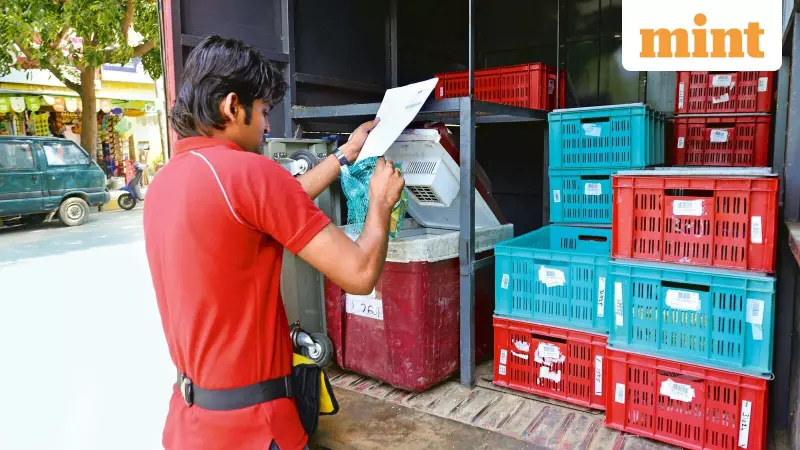
The unprecedented festive season hiring spree of 2025 has set the stage for a massive employment crisis among India's gig workforce. Companies across e-commerce, logistics, and consumer goods sectors recruited temporary workers in record numbers to handle the seasonal demand surge, but now face the reality that most of these positions will disappear by year-end.
Record Hiring Meets Grim Reality
This year's festival season witnessed extraordinary temporary staffing levels, with agencies recruiting approximately 20% more gig and temporary workers compared to the previous year. The shorter summer season had created inventory pile-ups of seasonal white goods, prompting retailers and consumer brands to prepare for massive demand spikes.
According to staffing industry experts, the situation will reverse dramatically come January. Neeti Sharma, CEO of TeamLease Digital, revealed that "barely 5–10% of the temporary staffing will get absorbed in the same company." The data from previous years supports this grim prediction, with only 3–7% of temporary and gig workers being absorbed by client firms last year.
Compensation Drop and Reverse Migration
The aftermath of the festive season will bring significant financial challenges for gig workers. Industry experts predict that remuneration for gig workers will see a 15–20% drop as they move across platforms seeking new opportunities.
Aditya Narayan Mishra, Managing Director of CIEL HR Service, which currently deploys about 50,000 temporary workers at client sites, confirmed that "barely 3% will get absorbed after the festival season, and the rest will be put in other projects or some may go to other staffing firms."
The situation is particularly challenging given that this year's festive season started earlier, with Ganesh Chaturthi falling in the last week of August compared to September last year. The extended buying period stretched through Diwali and will conclude towards the end of December.
Sector-Wide Impact and Worker Mobility
Recruitment patterns suggest that many affected workers may transition to the construction sector, while a significant portion may opt to move to tier 2 and 3 cities seeking more affordable living standards. Sunil Chemankotil, Country Manager at Adecco, estimates that "30-40% of those recruited may find it difficult to get jobs immediately, particularly the gig workforce."
The quick-commerce, e-commerce, retail, banking, and hospitality sectors had partnered extensively with staffing vendors to meet their manpower requirements. Many of these workers originally hail from smaller towns, making reverse migration a likely outcome.
Platforms like MyJobee, which primarily serves quick commerce and e-commerce firms, are already bracing for the impact. Sujay Pidara, Founder and CEO of MyJobee, attributed the cautious approach to "consumer spending hasn't picked up as strongly as expected, and many companies are being more cautious with budgets because of rising costs and broader economic uncertainty."
Silver Linings and Alternative Opportunities
Despite the challenging outlook, some companies are making efforts to mitigate the impact. Emiza, a third-party logistics and supply chain services provider that hired 80% more gig workers this festive season, stated it is working to absorb seasonal workforce into daily operations after the festive period ends.
Staffing firm Quess Corp is considering hiring gig workers in large numbers post-festive season as part of its temporary workforce. Lohit Bhatia, President of Workforce Management at Quess Corp, revealed that "we had hired about 9,000 employees a month largely from the gig talent pool last year after the festive season got over. This year, we have created a capacity to generate 20,000 hiring a month."
Bhatia also highlighted that gig employees often seek to shift to temporary payrolls due to benefits like provident funds and medical coverage. Approximately 40% of these workers eventually get recruited by clients as permanent employees after a couple of years.
The current scenario underscores the volatile nature of gig economy employment in India, where seasonal demand creates temporary booms followed by extended lean periods, leaving workers navigating an uncertain employment landscape.





